In the vast world of aquatic wonders, the Boeseman’s Rainbowfish (Melanotaenia boesemani) stands out as a true gem. This stunning fish, named after the Dutch ichthyologist Marinus Boeseman, belongs to the Melanotaeniidae family and is closely related to other rainbowfish species. With its vibrant colors and captivating presence, it’s no surprise that aquarium enthusiasts around the globe are drawn to this remarkable creature.
Table of Contents
The Boeseman’s Rainbowfish is native to the freshwater streams and rivers of West Papua, Indonesia, where it thrives in a habitat characterized by dense vegetation and moderate water flow. As a mid-dweller, this fish spends most of its time exploring the middle layers of the water column, adding a dynamic element to any well-designed aquarium.
One of the most fascinating aspects of the Boeseman’s Rainbowfish is its striking appearance. Males of the species display an array of brilliant colors, ranging from deep blues and purples to shimmering yellows and oranges. Their fins are adorned with intricate patterns and iridescent highlights, making them a true spectacle to behold. Females, while not as colorful, still possess an understated beauty that complements their male counterparts.
In terms of diet, Boeseman’s Rainbowfish are omnivorous and relatively easy to feed. They readily accept a variety of high-quality flake foods, pellets, and frozen or live foods such as brine shrimp and daphnia. Providing a diverse and well-balanced diet is essential to maintain their vibrant colors and overall health.
When it comes to tank mates, Boeseman’s Rainbowfish are generally peaceful and can coexist harmoniously with other non-aggressive species. They thrive in groups of six or more, as they are naturally social creatures that enjoy the company of their own kind. Some suitable tank mates include other rainbowfish species, tetras, rasboras, and peaceful bottom-dwellers like corydoras catfish.
Creating the ideal habitat for Boeseman’s Rainbowfish is crucial to their well-being. A well-planted aquarium with plenty of open swimming space is essential, as these active fish appreciate room to explore and display their natural behaviors. Maintain a temperature range of 75-82°F (24-28°C) and a pH level between 7.0 and 8.0 to closely mimic their native environment.
Interesting facts about Boeseman’s Rainbowfish abound. Did you know that these fish are known to be skilled jumpers? It’s important to keep a tight-fitting lid on their aquarium to prevent any unwanted escape attempts. Additionally, during breeding season, males engage in fascinating courtship displays, flaring their fins and intensifying their colors to attract potential mates.
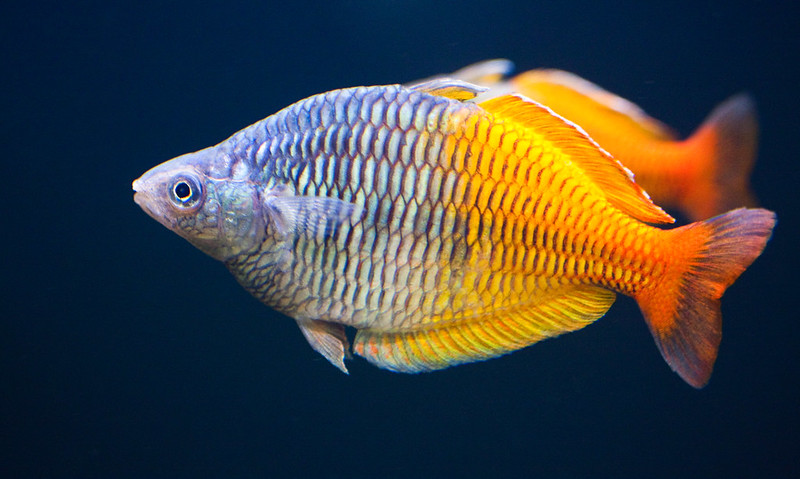
Key Information
Boeseman’s Rainbowfish (Melanotaenia boesemani) is a stunning freshwater fish that captivates aquarium enthusiasts with its vibrant colors. Males showcase a dazzling display of iridescent scales, featuring a combination of electric blue, deep purple, and shimmering gold hues. Their fins are adorned with striking patterns and highlights, making them a true spectacle in any aquarium. Females, while not as colorful as their male counterparts, still possess a subtle beauty with their silvery-green bodies and clear fins.
| Family | Melanotaeniidae |
| Price | $15 – $30 per fish |
| Common Names | Boeseman’s Rainbowfish, Boesemani Rainbow |
| Variants | None |
| Ideal Tank Size | 30 gallons or larger |
| Water Parameters | Temperature: 75-82°F (24-28°C), pH: 7.0-8.0, Hardness: 5-20 dGH |
| Lifespan | 5-8 years |
| Full Size | 4-5 inches (10-12.5 cm) |
| Natural Environment | Freshwater streams and rivers in West Papua, Indonesia |
| Behavior | Peaceful, active, schooling |
| Habitat Preference | Mid-level dweller, appreciates dense vegetation and open swimming areas |
| Aquarium Decoration | Well-planted with plenty of open space, driftwood, rocks |
| Ideal Tank Mates | Other peaceful fish such as tetras, rasboras, and other rainbowfish species |
| Fish to Avoid | Aggressive or large predatory fish |
| Best Foods/Diet | Omnivorous; high-quality flakes, pellets, frozen, and live foods (brine shrimp, daphnia) |
| Disease | Susceptible to common freshwater diseases if water quality is poor |
| Sex-Switch | No |
| Gender Differences | Males are more colorful and have larger fins than females |
| Care Level | Moderate |
| Breeding Level | Moderate; egg-scatterers that require specific conditions for successful breeding |
Ideal Tank Mates
When selecting tank mates for Boeseman’s Rainbowfish (Melanotaenia boesemani), it’s essential to choose species that share similar water parameters, temperament, and habitat preferences. Boeseman’s Rainbowfish are peaceful, active, and enjoy the company of their own kind, as well as other non-aggressive fish.
Ideal tank mates should not only be compatible with Boeseman’s Rainbowfish but also contribute to creating a harmonious and visually appealing aquarium. By carefully considering factors such as size, behavior, and swimming levels, you can create a thriving community tank that showcases the beauty and diversity of freshwater fish.
Here are 15 ideal tank mates for Boeseman’s Rainbowfish, along with reasons why they are compatible:
1. Neon Tetras (Paracheirodon innesi)
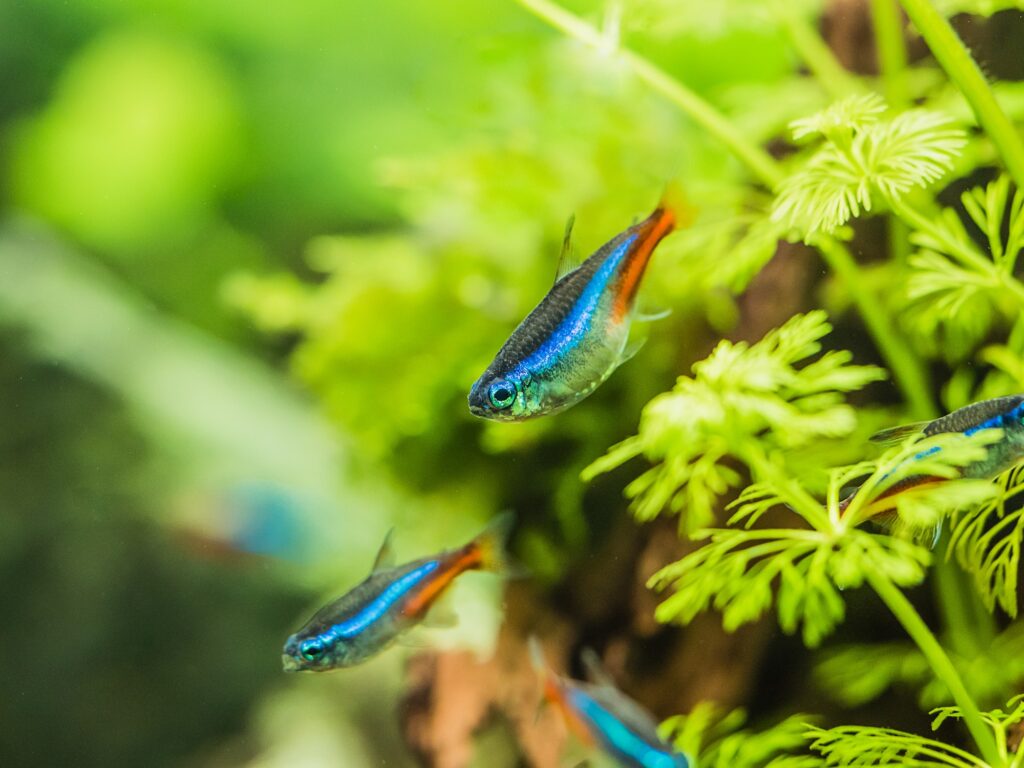
Neon Tetras are small, peaceful, and colorful fish that occupy the middle to upper levels of the aquarium. Their iridescent blue and red stripes complement the colors of Boeseman’s Rainbowfish, creating a visually stunning display.
2. Rummy Nose Tetras (Hemigrammus rhodostomus)
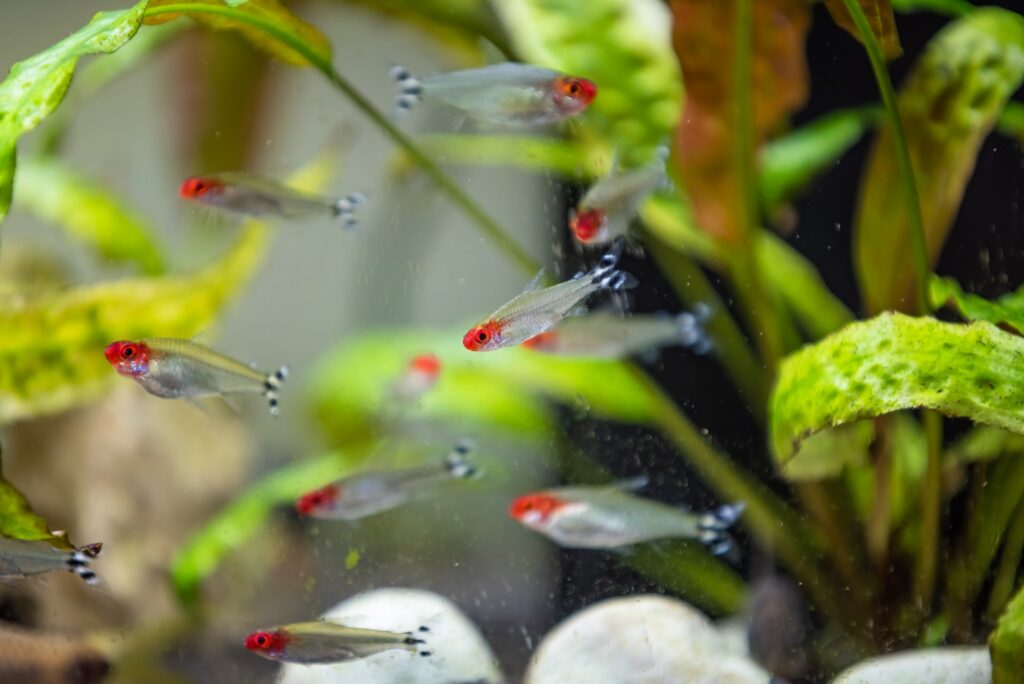
Rummy Nose Tetras are another peaceful schooling fish that can coexist harmoniously with Boeseman’s Rainbowfish. Their unique red nose and silver body add an interesting contrast to the vibrant colors of the rainbowfish.
3. Harlequin Rasboras (Trigonostigma heteromorpha)

Harlequin Rasboras are small, active, and peaceful fish that thrive in similar water conditions as Boeseman’s Rainbowfish. Their unique triangular shape and reddish-orange coloration make them an attractive addition to the community tank.
4. Corydoras Catfish (Corydoras spp.)
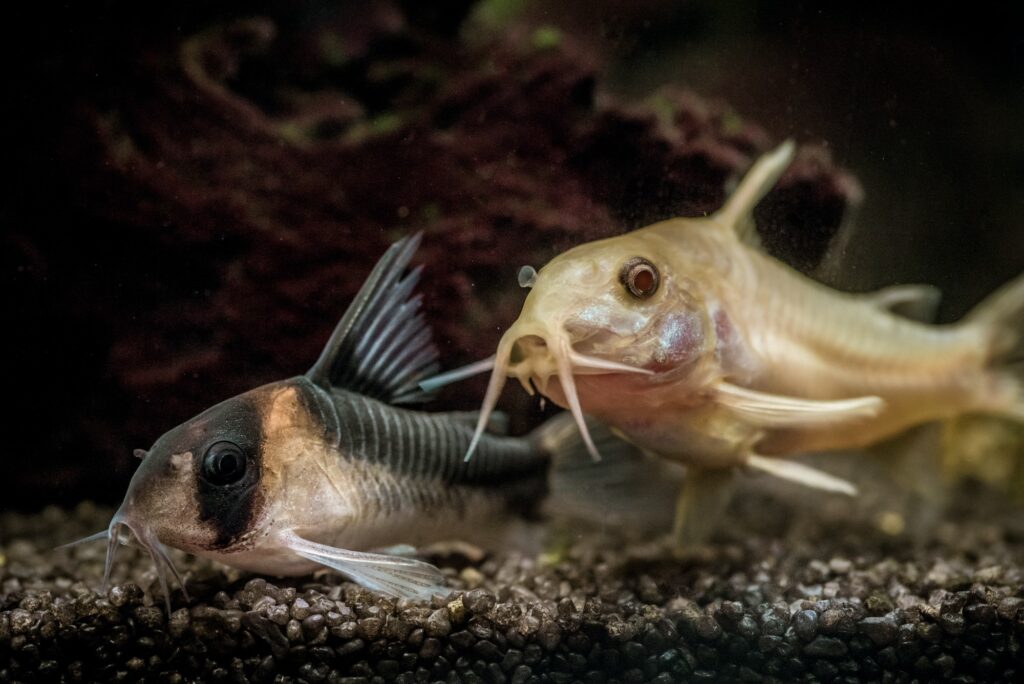
Corydoras Catfish are peaceful bottom-dwellers that help keep the aquarium clean by scavenging for leftover food. They come in various species and patterns, adding diversity to the lower levels of the tank.
5. Kuhli Loaches (Pangio kuhlii)
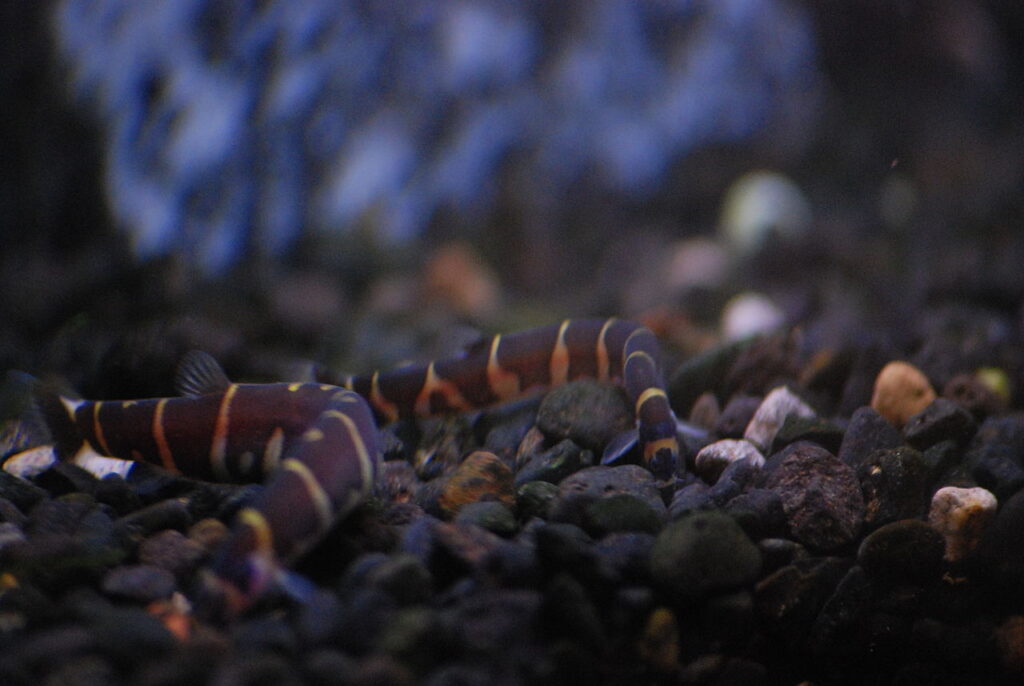
Kuhli Loaches are nocturnal, eel-like fish that peacefully explore the bottom of the aquarium. Their unique appearance and fascinating behavior make them an interesting addition to the community tank.
6. Cherry Barbs (Puntius titteya)
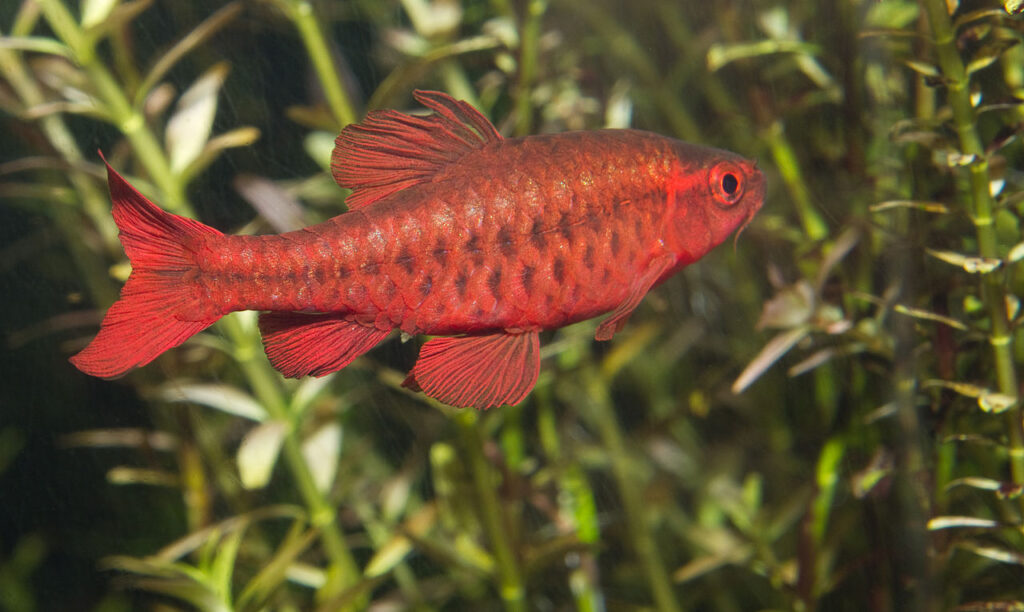
Cherry Barbs are small, peaceful, and colorful fish that can coexist well with Boeseman’s Rainbowfish. Males display a striking red coloration, while females have a more subdued appearance.
7. Scissortail Rasboras (Rasbora trilineata)
Scissortail Rasboras are peaceful, active, and schooling fish that occupy the upper levels of the aquarium. Their unique forked tail and iridescent silver body make them an eye-catching addition to the community tank.
8. Dwarf Gouramis (Trichogaster lalius)
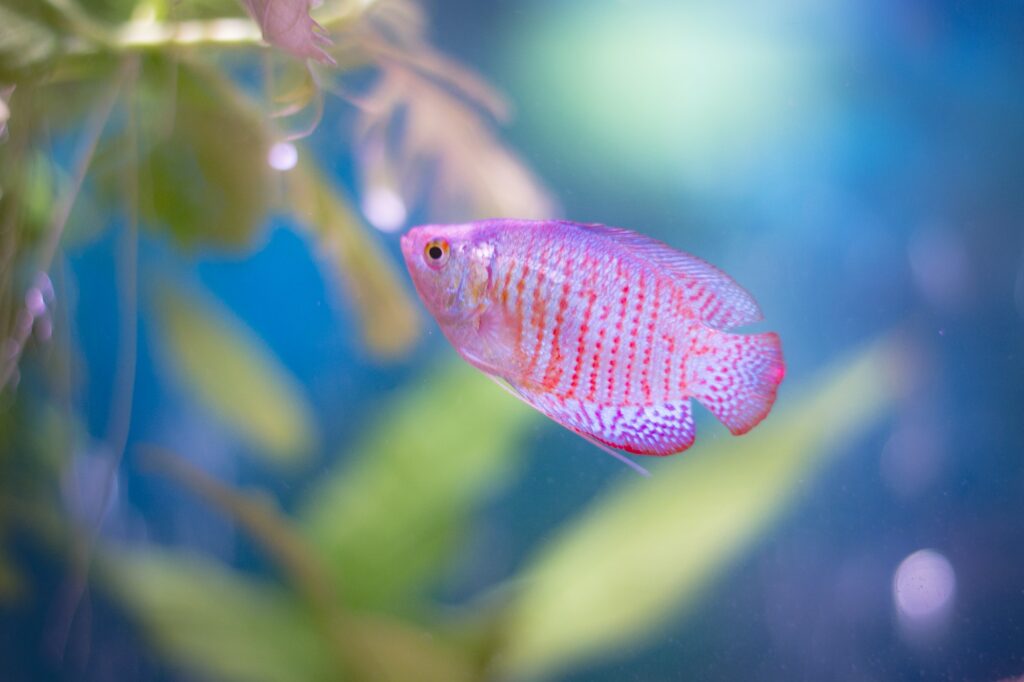
Dwarf Gouramis are peaceful, colorful, and relatively slow-moving fish that occupy the middle to upper levels of the aquarium. Their vibrant colors and flowing fins add a graceful presence to the tank.
9. Zebra Danios (Danio rerio)
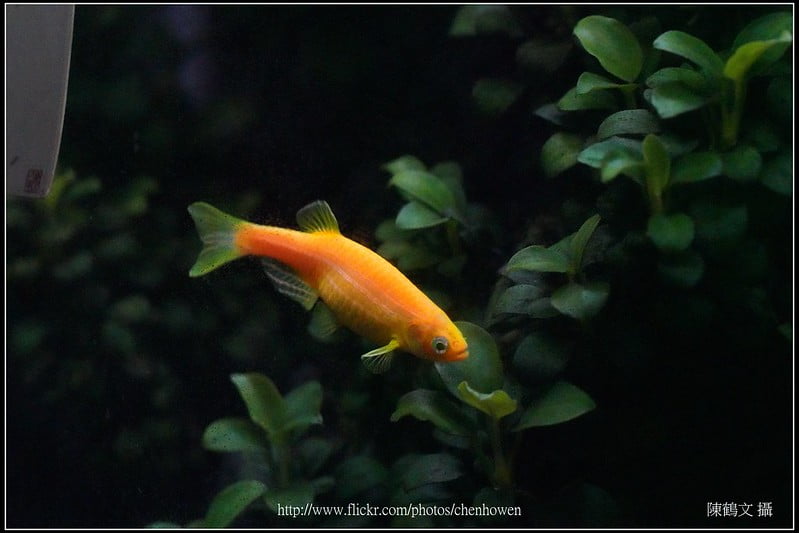
Zebra Danios are hardy, active, and peaceful fish that can adapt to a wide range of water conditions. Their striking horizontal stripes and energetic behavior make them an entertaining addition to the community tank.
10. White Cloud Mountain Minnows (Tanichthys albonubes)
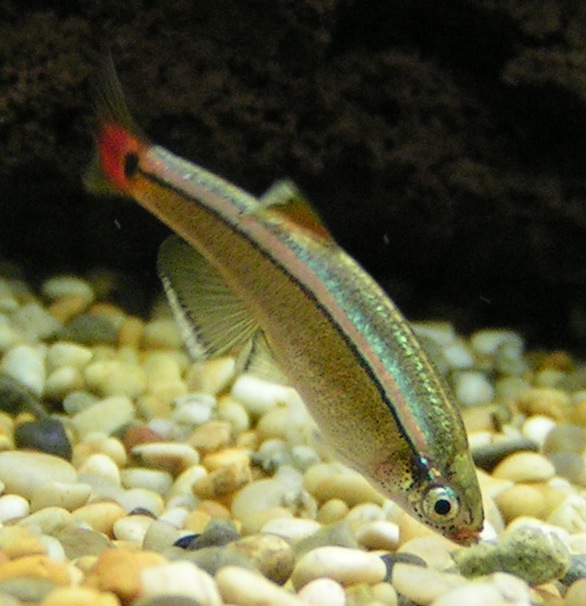
White Cloud Mountain Minnows are small, peaceful, and hardy fish that thrive in cool water conditions. Their silvery-green bodies and red fins create a subtle yet attractive display.
11. Bristlenose Plecos (Ancistrus spp.)
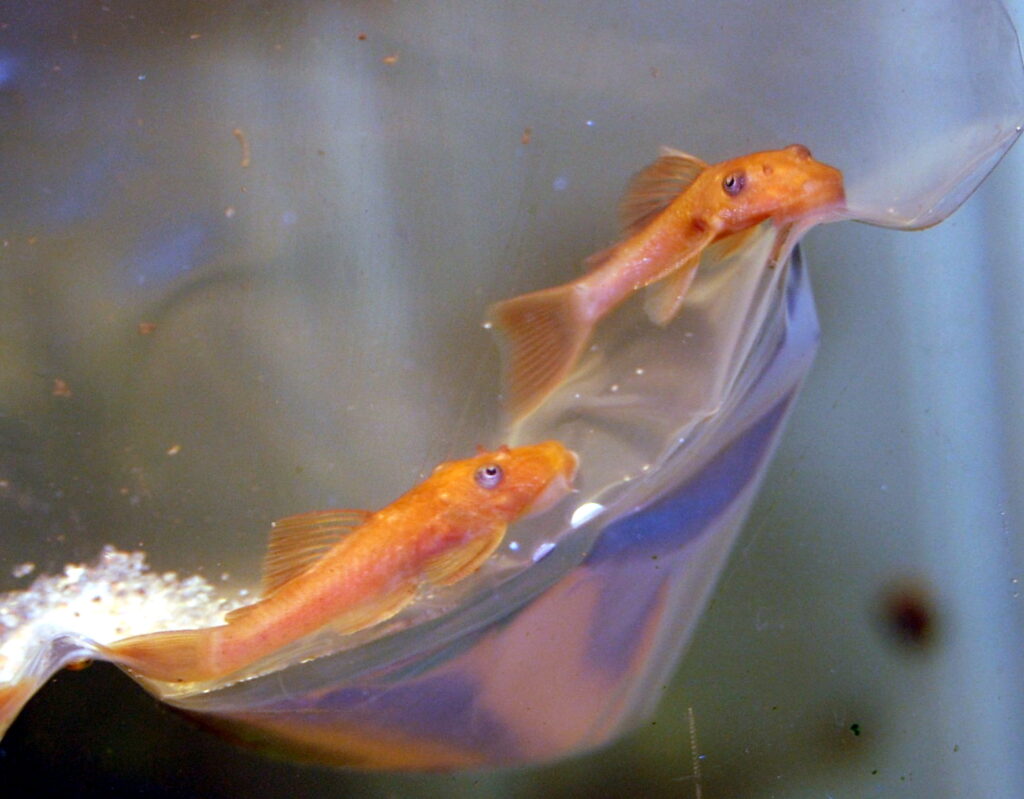
Bristlenose Plecos are peaceful, algae-eating catfish that help maintain a clean aquarium. Their unique appearance, with bristle-like protrusions on their snout, adds character to the bottom of the tank.
12. Pearl Gouramis (Trichopodus leerii)
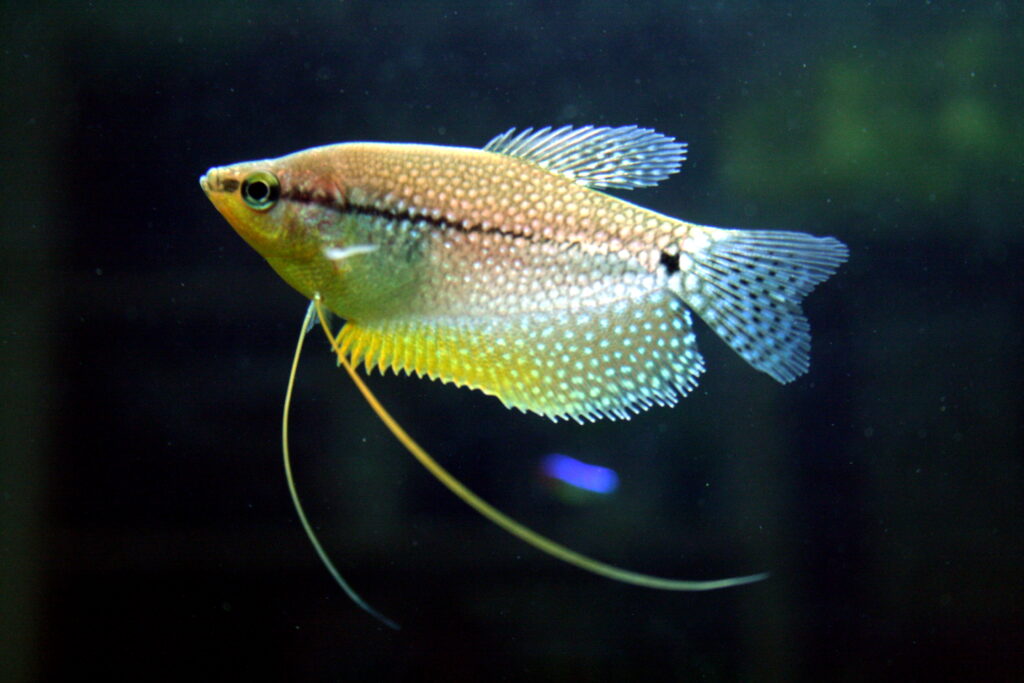
Pearl Gouramis are peaceful, elegant, and relatively large fish that can coexist with Boeseman’s Rainbowfish in spacious aquariums. Their iridescent scales and flowing fins create a stunning display.
13. Emperor Tetras (Nematobrycon palmeri)
Emperor Tetras are peaceful, colorful, and active fish that occupy the middle levels of the aquarium. Males display a striking purple and orange coloration, while females have a more subtle appearance.
14. Yo-Yo Loaches (Botia almorhae)
Yo-Yo Loaches are peaceful, active, and social fish that enjoy the company of their own kind. Their unique patterning and playful behavior make them an entertaining addition to the community tank.
15. Rams (Mikrogeophagus ramirezi)
Rams, also known as German Blue Rams or Bolivian Rams, are peaceful and colorful cichlids that can coexist with Boeseman’s Rainbowfish in a well-maintained aquarium. Their vibrant colors and interesting behavior make them a popular choice among aquarium enthusiasts.
FAQs
How many Boeseman’s Rainbowfish should I keep in my aquarium?
Boeseman’s Rainbowfish are schooling fish that thrive in groups of six or more. Keeping them in larger numbers not only reduces stress but also encourages natural behaviors and showcases their stunning colors. In a 30-gallon aquarium, a group of 6-8 Boeseman’s Rainbowfish would be ideal.
Can I keep Boeseman’s Rainbowfish with shrimp or snails?
Yes, Boeseman’s Rainbowfish can coexist peacefully with most shrimp and snail species. These invertebrates can help keep the aquarium clean by consuming algae and leftover food. However, it’s essential to provide hiding spots for the shrimp and snails to ensure their safety.
How often should I feed my Boeseman’s Rainbowfish?
It’s best to feed your Boeseman’s Rainbowfish small portions 2-3 times a day. Offering a variety of high-quality foods, such as flakes, pellets, and frozen or live foods, will ensure they receive a well-balanced diet. Avoid overfeeding, as this can lead to water quality issues and health problems.
Do Boeseman’s Rainbowfish require a heater in their aquarium?
Yes, Boeseman’s Rainbowfish are native to the warm waters of West Papua, Indonesia, and require a stable temperature range of 75-82°F (24-28°C). Using a reliable aquarium heater is essential to maintain the proper water temperature and keep your fish healthy.
How often should I perform water changes for my Boeseman’s Rainbowfish tank?
Regular water changes are crucial for maintaining good water quality and preventing the buildup of harmful toxins. Aim to perform a 25-30% water change once a week, using a gravel vacuum to remove debris and waste from the substrate. Be sure to treat the new water with a suitable conditioner to remove chlorine and chloramine.
Can I keep Boeseman’s Rainbowfish in a planted aquarium?
Absolutely! Boeseman’s Rainbowfish thrive in well-planted aquariums that mimic their natural habitat. Live plants not only provide shelter and hiding spots but also help maintain good water quality by absorbing excess nutrients. Choose hardy, fast-growing plants such as Java Fern, Anubias, and Amazon Sword to create a lush, natural environment for your fish.
How can I encourage breeding in my Boeseman’s Rainbowfish?
To encourage breeding, provide your Boeseman’s Rainbowfish with a clean, well-maintained aquarium with plenty of hiding spots and floating plants. Maintain stable water parameters and offer a varied, high-quality diet. When the fish are ready to spawn, males will display heightened colors and engage in courtship behaviors. Once the eggs are laid, remove the parents to prevent them from eating the eggs or fry.
Do Boeseman’s Rainbowfish require special lighting?
While Boeseman’s Rainbowfish don’t have specific lighting requirements, providing a well-lit aquarium can help showcase their vibrant colors and promote the growth of live plants. Aim for a balance between natural daylight and artificial lighting, with a photoperiod of 8-10 hours per day. Avoid placing the aquarium in direct sunlight, as this can lead to excessive algae growth and temperature fluctuations.